Self-Expression & Trauma: What to Do When You Feel Stuck In "I Don't Know"
Unresolved trauma may be a reason people seek out therapy. Trauma occurs when we experience an unexpected event that is threatening to our survival. Trauma impacts our brain, our nervous system, our body and the myriad ways these parts interact in order to regulate our whole selves.
One often immensely frustrating symptom of trauma is a sense of not knowing. Not knowing why you feel the way you do. Not knowing why you are experiencing panic in situations that don’t warrant it. Not knowing why you can’t seem to stop having reactions that don’t match the intensity of a situation. Not knowing why you can’t sleep at night. Not knowing why the coping strategies that used to work aren’t cutting it. Or even, not knowing how you feel or how to connect with feelings and sensations.
There are biophysiological reasons for why this not knowing occurs. It is okay and your body is doing what it was designed to do. I will offer a very simplified explanation below as to what happens in the brain and body. If you are interested in learning more on this topic, I highly recommend reading the Body Keeps the Score by Bessel van der Kolk, M.D., and Waking the Tiger by Peter Levine.
What Happens When We Experience Trauma?
When we experience a trauma, our brain prioritizes sending energy and oxygen to the parts of the brain that create action without having to think about what to do in order to do it. In threatening situations, this is important. We don’t have the luxury of spending time contemplating what to do. That could be detrimental to our existence.
Sometimes, the brain interprets the threat as so dangerous to warrant not fighting or fleeing and instead sends us into freeze mode. It does this so as to make us appear frozen or dead to the threat. We can observe this function in other species of animals and reptiles, as well. Once the threat is over, the brain allows the functions which were powered down to fire up once again.
Sometimes the memory of what occurred gets stuck in our muscles, tissues and cells making it difficult for the cognitive parts of our brain to make sense of it all or even to recall it at all. Then when the body picks up on a similar sensation we had immediately prior, during or in the wake of the trauma it sends a message to the brain to go back into protection mode. When this happens, it can feel overwhelming, confusing and frustrating because it doesn’t necessarily make sense in that moment. The brain triggers the body to go back into a state of protecting oneself against a clear and present danger – which was in the past.
Self-Expression & Trauma
Various forms of self-expression offer an invaluable way in which to making meaning and find a sense of understanding when this occurs. They allow one to express and release what our mind-body has not yet been able. It is integral that the focus of self-expression is about the process of doing and not the aesthetics of the product created or expressed. Creating from this place is about bringing forward information from our unconscious for our mental health and not for critique or evaluation. There is no correct or incorrect way of doing this. Try, as best as possible, not to judge your expression.
Visual art making, dance and movement of the body, vocalizations of sound, rhythm creation through drumming or instrumentation and free association expressive writing are all forms of self-expression that can allow one to express a known experience without needing to rationally explain. These acts of expressing through a means other than verbal communication can aide in finding meaning making and understanding of one’s experience because the knowing is in a form, or forms, outside of oneself. These forms help to facilitate the unfolding and witnessing of a new perspective of one’s experience. In addition, they are able to communicate what happened without talking about the experience itself. The expression becomes a metaphor for the lived experience.
Intermodal Transfer as a Form of Self-Expression
One of my favorite things to do is to amplify the metaphor expressed in one modality by then reflecting upon that expression through another. In the field of expressive therapies this is referred to as the intermodal transfer. Expressing oneself through multiple modalities creates increased opportunities for the subconscious to come forward and not get blocked off by one of our stealthy defense mechanisms.
Below is an example of an intermodal transfer process. There is no form of expression that has to happen, nor do they need to occur in any particular order or frequency. The example I offer uses multiple forms, but you might start with just two.
First, I may begin by creating a piece of visual art exploring some tension held in a specific place within my body.
I then might interpret what was created visually by expressing it as a sound or rhythm.
Next I might use free association writing techniques (writing whatever comes to mind without censorship) in response to the sounds and sensations I just experienced.
I then might scan that piece of writing for clusters of words that resonate or connect and pull those out to create a poem.
Afterwards I might interpret the poem through moving my body in space or dancing.
Finally, I might end the experience by engaging in reflective writing about the multi-layered process of expressing.
The final process of writing reflectively about the process of expression and any insights gained further facilitates the finding words and making sense of understanding the original topic – in this case the tension held in my body. This helps in the finding of words which were not accessible to me at the onset.
If you are in therapy to address trauma and struggle with that frustrating feeling of not understanding, I encourage you to try this process on your own. If you feel comfortable, bring the expression into your therapy session to further process with your therapist. If you are engaging in EMDR or Brainspotting, ask your therapist if you can integrate the use of the created imagery or writing within these processes to further facilitate integration of your experience. Most importantly, if you are feeling stuck in that place of not knowing, you don’t have to experience it alone or in silence. There are highly trained professionals available to help.
Search Our Other Blogs!
Interested in Counseling for Trauma & PTSD?
If you’re a Marylander who knows that counseling is the direction you need to take, the therapists at LifeSpring Counseling Services are here to help. We offer online counseling services for mindfulness, depression, anxiety, trauma, and grief and loss. We also offer Brainspotting as a specialized service, and Brainspotting can be done online, too!
Here’s how you can get started! Online counseling for trauma and PTSD aren’t the only services offered at our Maryland office
The counselors and social workers at our Maryland office also offer counseling services for trauma, grief and loss, boundary setting, communication skills, and difficult life transitions. We also offer specialized counseling services including Brainspotting and spiritually-integrated counseling. Because we are located next to several local universities, we also work with college students and international students.
Written by: Reina Lombardi, ATR-BC, ATCS, LMHC-QS
Reina is a Registered Board Certified Art Therapist and the owner of Florida Art Therapy Services, LLC . She also is the host of The Creative Psychotherapist podcast and offers professional consultations through the Creative Clinician’s Corner.
Photo Credit: Anete Lusina and Marta Wave
Date of download: 9/26/2022



